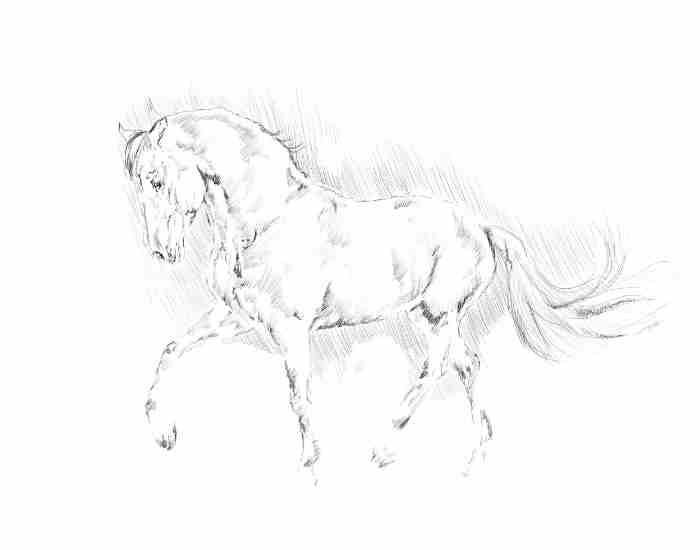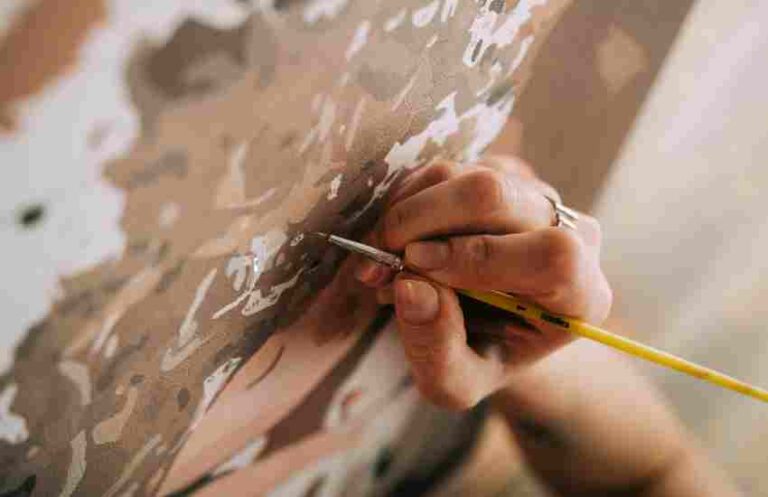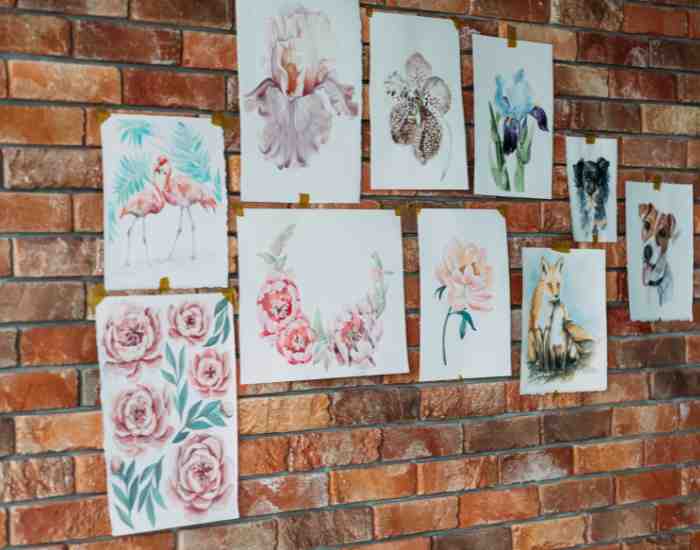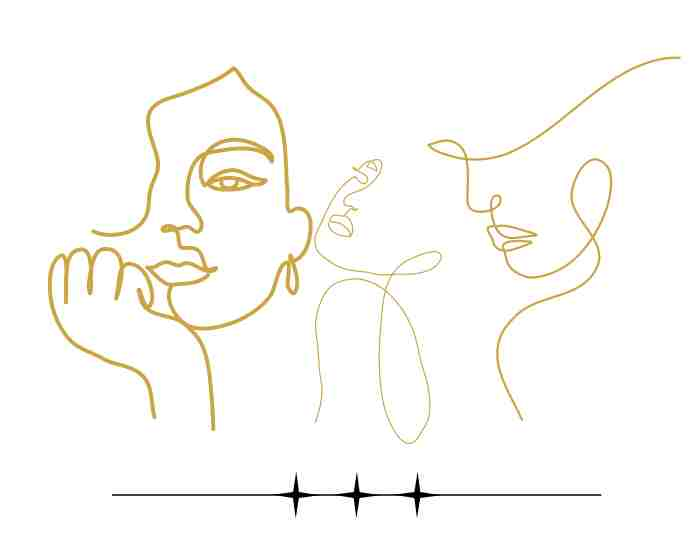What if I told you that you can give life to a work of art using only black, white, and all the hues of gray in between. This is the defintion of the ‘Grisaille’ painting technique, where a broad range of shades on the grayscale is used to create vision and dimensionality in an artwork.
Grisaille was the reason many features and details of the cloths or furniture were painted in historical times. An approach that is simple and easy for amateurs and professionals alike has been admired for centuries due to its convenient application and great results. But it is more than just a technique, it is a form of art that survived over centuries, meeting the demands of artists and the new innovations.
I welcome you to an exquisite world of Grisco where we are going to explore the history of the grisaille painting technique , its application in contemporary arts, and Much more from both trained as well as untrained artists and their life I wish you the best in your journey of learning to paint.

The Grisaille Technique
As an art technique, grisaille is skilled in creating a sculpture effect through a range of monochromatic grey hues. This technique has two interrelated functions – it is both a monochromatic aesthetic that can be appreciated on its own, and a technique for painting that breaks down tonal compositions of color, which are later used to paint over multiple layers.
The form of grisaille painting was first observed in the proto renaissance period and is one of the notable forms in the history of painting. The Dutch artists who employed this style in their art bridged the medieval with modern times. The artistic significance of grisaille is exemplified in Hugo van der Goes portrait where the technique has been used to breath emotion and more stories into the art work.
Historical Overview
The prospects offered by Grisaille have indeed been valued throughout the centuries, and its development has endured in the Grisaille technique.) Its plasticity has been applied in many forms, from the ancient frescoes to oil and enamel paintings of the subsequent era. The Chiostro dello Scalzo in Florence, featuring the Grisaille frescoes by Andrea del Sarto and the beautiful works of Bruegel the Elder, are an example of such use of the technology in different periods.
User Manual
Before starting a Grisaille painting, certain materials are considered very important, and among them oil paints, brushes, and canvas are the most critical ones used in this art. However, the grisailles techniques has been much more broadly applied other than in painting, in such techniques as enamel work and glass art for instance. This flexibility also enhances the understanding of the importance of the artworks in which the Grisailles technology’s versatility is applied and further explains her comprehensive role as a standard technique in an artist’s arsenal that adds tonal refinement and geometric volume to a multitude of works.

Grisaille in the World of Art
Notable Instances
The art form known as grisaillehas always been historically significant as an overlooked grayscale painting approach that seeks to place artistic emphasis one depth, emotion and detailing. Some great artists that were able to put this technique to good use include
Giotto and Joseph Colella who’s works range from en camaieu to achromatist ones. Giotto’s flowerets with their breeze and religion retired to the back of the head approaches to art depict the potential that this technique has for early renaissance works. On the contrary, Joseph Colella’s paintings places grisaille into contemporary works and shows that this technique can still vividly and realistically depict even the most intricate details in modern day stories.
Grisaille Across Genres
The kinh nghiệm ve tranh monochrome grisaille is consider as the most useful style because it creates lifelike and virtual sculptures of the subject out of Zoe shades of gray, a technique which gives depth of soul to the work completed. For small-scale interiors and even for cemetery paintings it is possible to use Grisaille’s tonal paintings to evoke larger and even more detailed and setting with atmosphere but created simply in black and white. Such versatility only underscores the usefulness of Grisaille for depicting an incredibly broad spectrum of themes, while at the same time bearing an important contribution to the extent and meaning of the stories told by the artworks through different styles.
Modern Day Canvas
Within the modern art world, the grisaille techniques still seem to be adopted, however still artistically evolved. Grisaille has also been used in fashion design and now employs its self in graphic design creating breath taking pieces having both the classical and the contemporary feel. Innovative artists like joe colella are leading the adapting of transitional grisaille with modern techniques to create more breathtaking pieces of art. Their efforts show that there is still room for grisaille to adapt and evolve especially now that painting and fabrics capturing high end designs, as old painting techniques can be given new and inspirational takes.
Creating Your own Grisaille Artwork
Approaching creating a painting using the grisaille technique requires a balance between personal input and techniques. And the process starts with outlining the artwork by drawing it which is incredibly important as it is the foundation of everything you will create. The splash of monochrome would have dramatic effects through form and light creating an illusion from the pieces.
In the next phase explains and requires you to have patience and tact as it warrants the addition of multiple shades of gray. You mix the colors of gray as you first start with the darkest tone and slowly move on to the lighter shades of gray. This requires you thinking if whether the object or scene being painted is an artificial light source or natural light and where its direction is coming from. This systematic process not only adds depth to the painting but also is a great way to understand how the interplay of light and shadow in a given situation works.
Tips and Tricks
There’s no doubt that Grisaille painting technique is one of the most beautiful forms of art and it’s fair to say that getting a hold of it will be a journey of ups and downs but rather gratifying at the end. To ensure that your work does not look dull but rather has an almost clear effect with good highlights, it is indispensable to enrich one’s understanding of how to use paint to create striking elements. Dry brushing and stacking are two helpful methods for achieving this, allowing canvas white or lighter colored paint underneath to assist in delivering light and dimension.
One can appreciate the endurance and trial and error as emphasized by artists like Julian Ashton and the members of the Julian Ashton Art School in the Rocks Sydney. A simple technique such as glazing with out a strong tint of color can tint the grays which would eventually enhance the overall look of the painting in terms of its depth and atmosphere which would have been difficult to portray.
Learning from Errors
There are many obstacles to overcome in order to master grisaille and these obstacles can be overcome through creativity. Basic mistakes such as adding too much work in one area or finding a light moment within the darkness are things that can demotivate newly inducted artists. But again, these hurdles can be passed.
Apart from learning techniques and styles from contemporary or historical Grisaille artists one can learn to use these issues to their benefit. Every artist must learn the skill of staring at their work from a distance, from resting, or from tackling the problem of painting. That being said, there are boundaries of creativity. Emphasis is to focus on each mistake as it conceals a major learning that well eventually polish the painting technique and the concept better.
The Grisaille Painting Technique in Art Quilts
Using the Grisaille painting technique is not limited to working on canvas as it has a distinct and interesting dimension in the practice of sculpture and in the detailing of architecture. This technique, on the other hand, when used on sculptural pieces gives a three-dimensional effect, which is remarkable in its extent and degree of texture, to the shape and space offered in the piece.
In sculpture, Grisaille is employed to achieve a balance between darkness and light on the surface of the sculpture, which helps emphasize every inch that needs attention, including some that otherwise would be overlooked. Historical examples like the works of Renaissance sculptors apply monochrome painting in order to depict characteristics of other materials, projects the effect of depth and volume on flat surfaces or enhances the realism of sculptures.
Similar effects are also observed in architectural detailing, where this technique can be used to produce false textures and ornate designs on the ceiling, walls and facades. From the French Gothic cathedrals embellished with Grisaille glass to the Italian Renaissance façades painted with murals of trompe l’oeil, throughout the ages and styles, this technique has added an element of story and interest to architectural works.
Digital Grisaille
Grisaille in the digital age has effortlessly found its place in the world of digital art having crossed into the realm of the virtual painting. Those who are skilled in digital methods and wish to employ grisaille in their artwork start by painting the sich base in gray scale. Then, color is applied to some of the areas, while grey is painted over some others to achieve the tone desired. This method guarantees that the painting will always have an even balance of the colors used without washing them out, in short the essence is always present.
Grisaille incorporation in the CGI artwork establishes the connection between the classical ways of painting and the modern ways of using a computer. It enables artists to go more into detail, intelligently in more directions: Comprehension of Light and Form plus the power of computer. Whether for concept art, illustrations, or digital paintings, Grisaille has proven to be a broad base, able to increase the clarity, depth and emotional context of the digital pictures.
FAQs
What are the benefits of using the grisaille painting technique?
The grisaille lays the groundwork for good mastery of value and composition albeit in a narrow spectrum of color. Thus, it enables to be great for refocusing on aspects of the paintings which can be enhanced further, such as lighting and shadows. It goes without saying that when the approach to creating realistic volumes with depth is change from painting with all colors to painting solely with shades of gray, it will open new doors for artisans. So the grit can sprucing up their skills as well.
How can I get started with Grisaille painting?
Like all good things, Grisaille does come with a few caveats. For a rough drawing will always help you get started on the right foot. Drawings aren’t just nice to have; they’re important for good composition and building on relatively more advanced designs. Additionally, it may be advantageous to practice rendering techniques on a simple drawing so that you know how to move from basic illustration to the technical approaches that will produce more sophisticated art pieces.
What supplies do I need for Grisaille painting, and how do I select them?
For Grisaille, a student or any other artist needs basic tools such as good quality grey scale paints (oil or acrylic will be appropriate for beginners), a few paintbrushes with thickness ranging from fine for details to medium for covering large areas, as well as a canvas or board prepared for painting. There are sometimes great similarities among choices of materials for most tasks, but one has to remember the specific requirements or seek guidance from fellow craftspeople or reputable art supply shops.
Conclusion
The grisaille painting technique is an adequate method of working in monotones and was widely used throughout Renaissance; it also facilitates colour work and in itself is pleasing. Altogether, its usefulness explains why it has stayed in the practice for quite some time.
Not only is this an opportunity for artists at any level in the marketing field to develop their own grisaille style, but this practice allows for artists to develop a completely new meaning on the relation between light, shadow and form. As a great practice for amateurs, an artist who wishes to become a fine artist, or as an art fan who enjoys the simplicity complexities of monochromatic pieces, Grisaille is a different perspective over a given subject.
More Post





